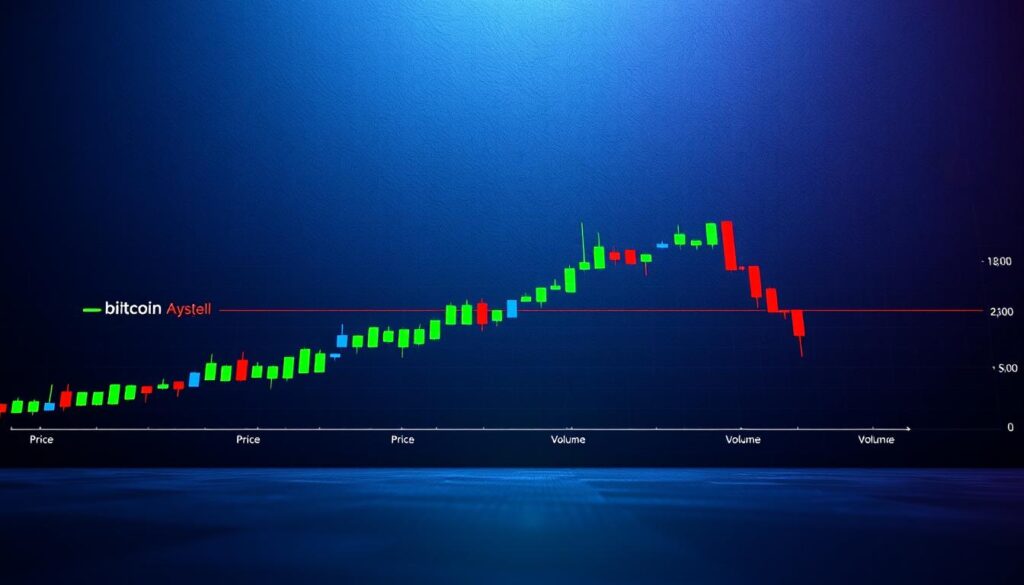Now Reading: Understanding Bitcoin Dominance Altcoin Season Indicator
- 01
Understanding Bitcoin Dominance Altcoin Season Indicator
Understanding Bitcoin Dominance Altcoin Season Indicator

The digital asset landscape is a dynamic and ever-changing environment. Traders and investors rely on various tools to navigate its complexities. These tools help them understand the prevailing trends and make informed decisions.
One of the most critical tools for gauging market sentiment is a specific metric that tracks capital flow. This metric acts as a barometer, measuring the relative strength between the largest digital asset and the rest of the ecosystem. It provides a clear signal about which part of the market is leading the charge.
The crypto market experiences distinct phases where capital rotates between major players and smaller projects. Recognizing these phases is crucial for strategic portfolio allocation. Platforms like CoinMarketCap and CryptoRank have developed sophisticated tools to track these dynamics in real-time.
This guide will explore how this powerful metric functions. We will break down the data points it uses, including market cap ratios and performance over time. Understanding this tool empowers you to identify opportunities and optimize your strategy across different market conditions.
Introduction to the Bitcoin Dominance Altcoin Season Indicator
When alternative digital assets began competing for market share, analytical tools had to adapt to measure these new dynamics. This evolution created the need for specialized metrics that could track capital flow between different segments of the cryptocurrency space.
Background and Importance in Crypto Markets
The digital asset ecosystem transformed from a single-asset focus to a diverse landscape. Thousands of alternative projects emerged, each vying for investor attention. This expansion revealed clear cyclical patterns in performance.
Market participants noticed that capital rotates between major players and smaller projects. These rotations create distinct phases that repeat over time. Recognizing these patterns became crucial for strategic decision-making.
Overview of the Indicator’s Role
This measurement tool serves as a sentiment gauge for the entire market. It reveals whether participants prefer safety or seek higher returns. The indicator provides strategic insights beyond simple performance tracking.
Understanding these dynamics helps investors optimize their approach. Historical data shows significant differences in portfolio performance during various market phases. The tool assists with timing decisions and allocation strategies.
| Market Condition | Typical Behavior | Investor Strategy |
|---|---|---|
| High Dominance Periods | Conservative capital allocation | Focus on established assets |
| Declining Dominance | Increased risk-taking | Diversify into alternatives |
| Market Transition | Capital rotation between segments | Rebalance portfolio weights |
The table above illustrates how different conditions affect market behavior. These trends help participants make informed choices about their investment approach.
Bitcoin Dominance: Definition and Market Capitalization Impact
The competitive positioning of cryptocurrencies is fundamentally measured through market value ratios. These metrics reveal how capital distributes across different projects in the ecosystem.
What is Bitcoin Dominance?
This measurement represents the percentage share that Bitcoin holds within the total cryptocurrency market. It’s calculated by dividing Bitcoin’s market capitalization by the combined value of the top 125 coins.
The resulting percentage shows Bitcoin’s relative size compared to other digital assets. This ratio fluctuates constantly based on price movements and investment flows.

How Market Cap Shapes the Crypto Landscape
Market capitalization serves as the primary factor in dominance calculations. It reflects the total value of all circulating coins multiplied by current prices.
When Bitcoin’s market cap grows faster than alternatives, its dominance percentage increases. This often signals conservative investor behavior. Conversely, declining dominance indicates capital flowing toward smaller projects.
The market cap structure determines which coins command the most influence. Understanding these dynamics helps investors make informed diversification decisions across different market conditions.
Exploring Bitcoin Dominance Altcoin Season Indicator in Today’s Crypto Market
Current market conditions reveal distinct patterns in how investors allocate funds across the crypto ecosystem. The prevailing trend shows capital favoring established assets over smaller projects.

Recent measurements indicate a strong preference for stability. The current reading stands at 20 out of, signaling conservative investment behavior.
Key Metrics and Trading Volume Considerations
Trading volume serves as a crucial confirmation tool. High activity levels validate genuine market interest during asset rallies.
The measurement system tracks performance over 90-day periods. This timeframe smooths temporary fluctuations while capturing meaningful trends.
Key factors include the percentage of top assets outperforming the market leader. The duration and magnitude of these performance gaps matter significantly.
Comparison with Other Market Indicators
This tool works best when combined with other analytical methods. Sentiment gauges and technical analysis provide complementary insights.
Understanding these relationships helps traders make informed decisions. Historical patterns suggest cyclical rotations between different market phases.
Multiple indicators working together create a comprehensive market picture. This approach reduces reliance on any single data point.
The Mechanics Behind the Altcoin Season Index
The methodology behind performance tracking indices reveals important patterns in digital asset behavior. Understanding how these tools work helps investors make better decisions.
Calculation Methodology and Fundamental Components
The altcoin season index uses a clear calculation method. It measures how many top 100 digital assets outperform bitcoin over 90 days.
When 75% or more coins show better performance, it signals a strong market phase. The opposite occurs when only 25% or fewer coins beat the market leader.
The system excludes certain assets from its data analysis. Stablecoins and wrapped tokens are removed because their prices don’t reflect true market movement.
Historical Data and Performance Insights
Historical analysis shows this season index accurately identified major market shifts. Previous bull markets saw significant periods when altcoins collectively delivered strong results.
The 90-day measurement window provides reliable signals. It filters out short-term volatility while capturing genuine trend changes.
This index value scales from 1 to 100, offering detailed market insight. Higher numbers indicate stronger conditions for alternative digital assets.
Historical Trends and Market Data Analysis
Examining historical patterns provides crucial insights into cryptocurrency market behavior over extended periods. These trends reveal how capital rotates between different asset classes based on investor sentiment and risk appetite.

Interpreting Past Movements and Market Cycles
Digital asset markets operate in distinct cycles that repeat over time. These cycles typically alternate between periods favoring established assets and those favoring smaller projects.
Historical data shows that alternative asset surges often occur during mid-to-late bull market phases. This happens after major assets have already seen substantial gains. Investors then seek higher returns elsewhere.
These alternative-focused periods tend to be shorter and more volatile. Rapid gains are often followed by swift corrections when sentiment shifts back toward safer assets.
Lessons Learned from Historical Snapshots
Past cycles teach that timing is critical when rotating between different asset classes. Entering positions too early or late can significantly impact returns.
Historical examples show that not all alternative assets perform well during favorable periods. Specific sectors often lead while others lag. This requires selective exposure rather than broad investments.
Recognizing early transition signs provides strategic advantages. Increasing trading volume and narrowing market share gaps signal potential phase changes. A comprehensive altcoin season analysis guide can help identify these patterns.
| Asset | 90-Day Performance | Market Phase Indicator |
|---|---|---|
| MemeCore | +610.21% | Exception during current phase |
| Zcash | +552.01% | Sector-specific outperformance |
| Bitcoin | -6.56% | Current market leader |
| Ethereum | +1.85% | Modest gains in current cycle |
| Various Major Assets | -5.34% to -66.11% | Broad underperformance pattern |
The table illustrates current market conditions where established assets maintain strength while most alternatives struggle. This data confirms we’re in a phase favoring stability over risk.
Assessing Crypto Market Sentiment and Risk Factors
Navigating the emotional currents of digital asset trading requires sophisticated tools that measure collective investor psychology. These metrics help decode whether the market sentiment leans toward aggressive risk-taking or cautious preservation.

Understanding Market Sentiment Through Indicators
The sentiment gauge reveals when participants favor smaller projects over established assets. This shift indicates changing risk appetites across the cryptocurrency market.
Investors face distinct challenges during different market phases. Periods favoring alternative assets bring higher volatility and reduced liquidity for smaller projects.
Conversely, phases favoring major assets present different risk considerations. These include missed opportunities from smaller project rallies and concentration concerns.
The measurement tool provides objective data about market psychology. This helps investors time their entries and exits more systematically.
Liquidity conditions significantly impact portfolio adjustments during transitions. The indicator helps identify optimal rebalancing opportunities based on prevailing sentiment.
Trading Strategies During Altcoin and Bitcoin Seasons
Navigating the cyclical nature of digital assets demands flexible trading tactics that respond to prevailing conditions. Different market phases require distinct approaches to portfolio management and risk assessment.
Market participants must recognize when capital rotates between major players and smaller projects. This awareness helps investors capitalize on emerging opportunities while managing exposure.
Strategies When Altcoins Outperform Bitcoin
During periods when alternative digital assets show stronger performance, effective approaches involve careful capital rotation. Investors should focus on projects with solid fundamentals rather than speculative tokens.
Diversification across different sectors becomes essential during these phases. Spreading investments reduces exposure to any single category’s downturn while capturing broader market movements.
Establishing clear profit-taking rules helps lock in gains before corrections occur. Historical patterns show these favorable periods often end abruptly, making disciplined exit strategies valuable.
Adjusting Portfolios for Changing Market Conditions
When markets favor established assets, strategies shift toward capital preservation and accumulation. This phase typically presents opportunities to acquire major holdings at favorable prices.
Monitoring the indicator’s sustained trajectory provides more reliable signals than reacting to daily fluctuations. Gradual adjustments based on confirmed trends prove more effective than sudden portfolio changes.
Risk management during transitions includes maintaining stablecoin reserves and avoiding overleveraged positions. Sector rotation strategies can help capture specific opportunities while minimizing overall exposure.
Utilizing Key Metrics and Technical Analysis Tools
The integration of technical analysis with fundamental metrics creates a powerful decision-making toolkit. Professional traders combine these approaches to identify high-probability market movements.
Leveraging Data Sources and Technical Analysis
Platforms like TradingView provide comprehensive charting capabilities for market analysis. These tools display oscillators, moving averages, and summary signals that help identify trend changes.
Current technical readings show neutral signals across multiple indicators. This equilibrium often precedes significant price movements in either direction.
Combining data from CoinMarketCap, CryptoRank, and TradingView creates robust market intelligence. This multi-source approach provides confirmation that single-platform analysis cannot deliver.
Key metrics extend beyond basic ratios to include rate of change and sector performance. Trading volume trends and liquidity depth in major pairs offer additional confirmation signals.
Technical analysis helps identify historical support and resistance levels. These price points often mark transitions between different market phases.
Sector-specific analysis reveals that market shifts affect categories differently. Some sectors may outperform while others lag during the same period.
Time-based analysis using daily, weekly, and monthly charts filters short-term noise. This helps traders focus on sustained trends rather than temporary fluctuations.
An effective approach combines breakouts of key levels with index confirmations. This confluence provides stronger signals for portfolio adjustments than single indicators.
Established digital assets typically lead sector performance during market rotations. These coins offer better liquidity for position management compared to smaller alternatives.
Conclusion
This measurement tool provides essential clarity for navigating the digital asset landscape. It offers a quantifiable framework for strategic decision-making across various market phases.
Understanding how the metrics work together is crucial. One gauge tracks the leading asset’s market share, while another measures the breadth of outperformance by smaller projects.
Successful participation requires recognizing predictable capital flow patterns. These rotations are influenced by risk appetite, liquidity, and sector-specific developments.
The tool’s value extends beyond simple signals to reveal market psychology. This helps investors time their strategies more effectively.
Looking ahead, these cyclical rotations will continue. Integrating this indicator into a comprehensive framework is key for long-term success in the cryptocurrency market.
















